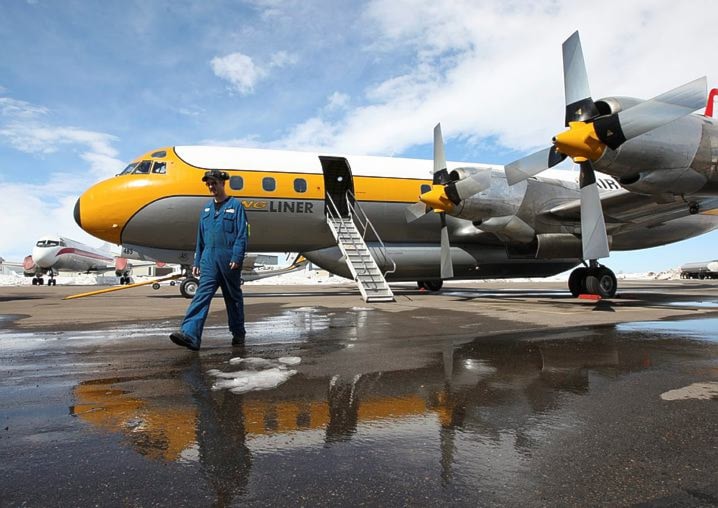The business of fighting forest fires is hot and cold, with the manpower requirements of companies like Air Spray Aviation rising and falling with the seasons.
Paul Lane, Air Spray’s vice-president and chief financial officer, said staff at its Red Deer Airport operations centre are kept busy during the winter servicing planes and other equipment. But much of that work disappears when aircraft and crews depart for fire-fighting duty.
Rather than lay off employees and hope they return in the fall, the company has been diversifying its operations to spread the workload across the calendar. This includes third-party maintenance work on fire-fighting and non-fire-fighting aircraft.
“We’re doing work that’s complicated and demands a lot of engineering time to get done,” said Lane. “In reality, there are not that many Canadian companies that can say, ‘We can get this work done.’”
Air Spray has been rewarded with a steady stream of contracts, with third-party maintenance becoming the fastest-growing area of its business.
“We’re actually thinking of building another facility,” said Lane, “and we’ll be launching here in the next little while a new company that we’re calling Springbrook Aerospace that will handle third-party maintenance.”
He expects Springbrook Aerospace to employ about half as many people as Air Spray, which has a payroll of more than 70
Meanwhile, Air Spray has established a solid foothold in the United States. It opened a 60,000-square-foot shop in Northern California a year and a half ago, with about 25 people working there.
Although the focus of that shop has been the conversion of two BAE 146 passenger jets into air tankers, the facility will also serve as the base of the company’s California operations.
Air Spray currently performs fire-fighting duties there on an as-needed basis, said Lane, but this role is expected to grow.
“We anticipate that it will be as big as our Canadian operations, quite frankly.
“In the U.S., the situation is dire. They really do have a very significant need for aircraft.”
Air Spray is still a big player when it comes to battling fires in Canada, with contracts in Alberta, British Columbia, Yukon and the Northwest Territories.
“From the 49th parallel to the Arctic Circle,” summed up Lane.
Its fleet includes eight L-188 Electra air tankers, with a ninth expected to be ready for duty this summer. In addition to the BAE 146s being converted in California, Air Spray is getting a pair of Air Tractor AT-802F light bombers and has nearly a dozen “bird dog” command planes.
The company is also becoming increasingly active in training — both its own pilots and those of other companies and governments. It has an L-188 Electra simulator and a bird dog simulator at the Red Deer Airport, and is developing a BAE 146 simulator.
hrichards@www.reddeeradvocate.com
